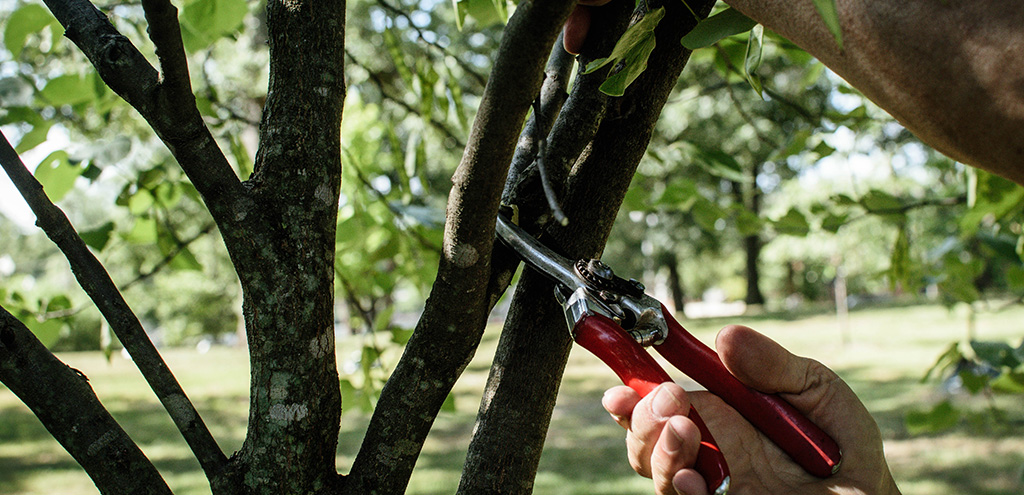THE LEAFLET

From the Archives: Pruning Tips
With frozen ground hampering planting plans and no need to water young trees, you may be wondering what else you can do throughout the winter to encourage healthy and sustainable tree growth. We have the answer: pruning (when necessary)!
As you may know, we’ve recently partnered with the Urban Forestry Division to build out our Pruning Corps and although our pruning workshop is full, there is still so much to learn! Here are some helpful tips courtesy of Urban Forestry Managers past:
Tools
- Use clean, sharp tools.
- Sanitize your tools in between pruning different trees.
Cutting
- Always cut to a bud, lateral branch, or main trunk.
- Do not leave stubs.
- Use the three-cut method for large limbs which are more than two inches in diameter.
- When pruning back to a main stem or another branch, do not make a flush cut. Instead make a cut outside the raised branch collar. The collar contains chemicals that are a barrier against pathogens and help the tree form woundwood.
- Do not remove more than one-quarter of the living crown of a tree at one time. If it is necessary to remove more, do it over successive years.
Common myths
- Dress the wound. For most species, dressings can damage the formation of woundwood. The only benefit of wound dressings is to prevent introduction of pathogens in the specific cases of Dutch elm disease and oak wilt.
- When removing a branch from a tree, the final cut should be flush with the stem to optimize healing. First of all, trees don’t “heal,” they seal by compartmentalizing wounds and generating woundwood over the wounded area. Flush cutting removes the “branch collar,” creating a larger wound than if the branch were removed outside the collar. The spread of decay inside the tree is greater with flush cuts.
- Tree topping is the proper way to prune a tree. No. Tree topping is the most detrimental form of pruning. Topping a tree creates large wounds that allow rot and fungal decay to enter the tree. Topped trees are more likely to break apart in storms than trees that retain their natural shape.
Timing
- Anytime is the best time to remove broken, diseased, or damaged wood.
- Structural pruning is best done in the dormant season (roughly December to mid-March). When leaves are down from deciduous trees, you can see and evaluate the tree’s structure.
- For some trees that flower in early spring, pruning is best after flowering; while other flowering species should be pruned in the dormant season to reduce the chance of transmitting disease. Check with your local arborist.
We also have a whole host of videos in our How-To section on our website.
While these resources are terrific, they are no replacement for the knowledge and expertise of an arborist. If you have a tree you’re worried about or you think needs significant pruning, get in contact with a Certified Arborist so they can take a look.
Wish you had a tree on your property to prune? Through our Residential Planting programs you can get a tree planted in your yard for little cost to you.